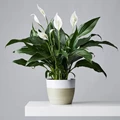
Plant Protection: As winters are approaching, you need to protect your plants from the cold damage that can cause big harm to crops. Frost occurs on clear, still nights. As the air temperature approaches freezing, the surface temperature of plants can dip below freezing, causing ice crystals to form in the same manner that dew forms on warmer nights. Because temperatures vary just a few feet above the ground, frost can form when your thermometer reads above freezing. Freezing temperatures may or may not be accompanied by frost.
Types of frost include:
-
Hoarfrost is the familiar feathery white frost you see on chilly mornings. It results when water in the air is deposited directly in the form of ice crystals.
-
Rime happens when water is deposited in liquid form through dew or fog which then freezes. Rime has a glazed appearance.
-
Black frost is a term used when frost didn’t form, but plants were nonetheless damaged (and blackened) by freezing temperatures.
Temperature freezing effects on Plants
The plants are mostly damaged when the duration of cold temperature is for long instead of high intensity. So gardeners should take proper care and precautions to protect their plants from damage.
The chart below explains the various terms that are used:
|
Temperature |
Type |
Effect on Plants |
|
Down to 28° F for a couple of hours |
Light Frost, |
Usually only harms very tender plants. Ice forms only on the outside of the plant. |
|
25-28° F for several hours |
Hard Frost, |
Damages foliage and blossoms. Ice forms inside the plant, causing plant cells to burst. Will kill back root-hardy perennials and damage crops. |
|
Below 25° F for several hours |
Severe freeze |
Causes damage to many plants, mostly through desiccation (drying). |
Research has shown that most crops and plants can recover from brief dips below freezing, but when the temperature reaches 28° F it begins to cause extensive cellular damage and crop loss.
How to protect plants from low temperature
These number of plants needs to be protected from frost which can be listed below and should be taken special care of;
-
Vegetable plants like tomato, corn, and pepper.
-
Annual plants like impatiens, petunia, and geranium
-
Bulbous plants as dahlia and elephant ear
-
Shrubs and trees bloom in the spring season like azalea, rhododendron, and cherry.
-
Citrus plants
-
Tropical plants
Different means of plant protection
Cover the plant:
The plants can be covered with fabric, old bedsheets, burlap, or commercial frost cloths (avoid using plastic). For best results, drape the cover over a frame to keep it from touching the foliage. Fabric covers help to trap heat from the soil, so make sure your cover drapes to the ground. Uncover them in the morning when the temperature rises above freezing.
Cover the tender sprouts:
The small sprouted plants should be taken special care of by covering them with an inverted bucket or flower pot or with a layer of mulch. It should be uncovered in the morning when the temperature rises above.
Check Losses:
The damaged portion of plants needs to be checked and removed and the fresh growth needs to be assessed in order to have good growth for the coming season. Hardy perennials, trees, and shrubs may recover from a late spring freeze, even if visibly damaged.
Prevention is better than cure:
Fertilizer should never be provided in freezing weather so as to avoid new growth and exposing it to damage. Choose plants that are hardy for your climate zone, or plant tender plants in containers that can be brought indoors

















